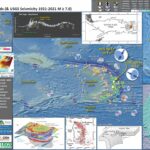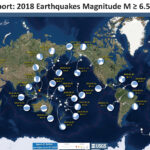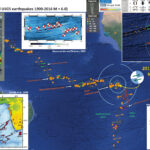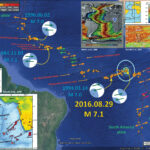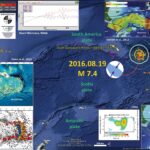I don’t always have the time to write a proper Earthquake Report. However, I prepare interpretive posters for these events. https://earthquake.usgs.gov/earthquakes/eventpage/us6000f53e/executive Because of this, I present Earthquake Report Lite. (but it is more than just water, like the adult beverage…
Earthquake Report: 2018 Summary
Here I summarize Earth’s significant seismicity for 2018. I limit this summary to earthquakes with magnitude greater than or equal to M 6.5. I am sure that there is a possibility that your favorite earthquake is not included in this…
Earthquake Report: Mid Atlantic Ridge
There was a M = 6.8 earthquake along a transform fault connecting segments of the Mid Atlantic Ridge recently. (now an M 6.7) https://earthquake.usgs.gov/earthquakes/eventpage/us1000hpim/executive The Mid Atlantic Ridge is an extensional plate boundary called an oceanic spreading ridge. Oceanic crust…
Earthquake Report: Mid Atlantic Ridge (Chain fracture zone)
If there was an earthquake in the middle of the ocean, and nobody felt it… would it still be an earthquake? Maybe we need to get the Karl Popper out for a good read… There was a good sized shaker…
Earthquake Report: Equatorial Mid Atlantic Ridge
Between my trip to southern Oregon for a talk on Cascadia subduction zone earthquake and tsunami hazards and preparing for a talk on the tectonic contribution to sea-level rise, there were two earthquakes. The first one, which I will write…
Earthquake Report: Scotia plate (S. Atlantic)
There was a large thrust earthquake along the Scotia plate today. Here is the USGS website for this M 7.4 earthquake. This is a very interesting region of the world with a very cool history. There is an east verging…

